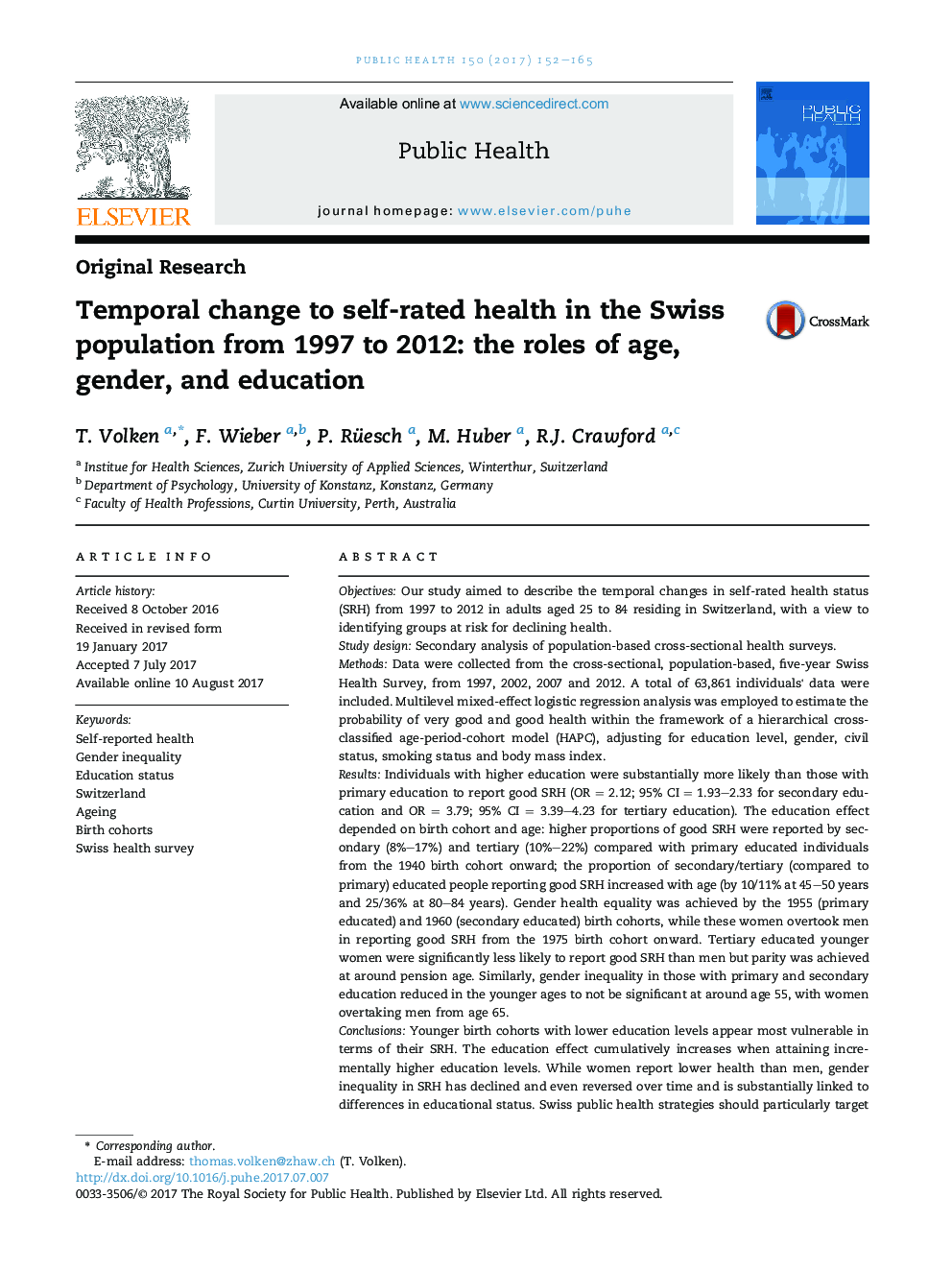| کد مقاله | کد نشریه | سال انتشار | مقاله انگلیسی | نسخه تمام متن |
|---|---|---|---|---|
| 5122703 | 1487193 | 2017 | 14 صفحه PDF | دانلود رایگان |
- Younger birth cohorts with lower education levels report poorer self-rated health.
- The effect of education cumulatively increases with higher education levels and age.
- Gender inequality in self-rated health has declined and even reversed over time.
- Public health strategies should target younger adults with lower education.
ObjectivesOur study aimed to describe the temporal changes in self-rated health status (SRH) from 1997 to 2012 in adults aged 25 to 84 residing in Switzerland, with a view to identifying groups at risk for declining health.Study designSecondary analysis of population-based cross-sectional health surveys.MethodsData were collected from the cross-sectional, population-based, five-year Swiss Health Survey, from 1997, 2002, 2007 and 2012. A total of 63,861 individuals' data were included. Multilevel mixed-effect logistic regression analysis was employed to estimate the probability of very good and good health within the framework of a hierarchical cross-classified age-period-cohort model (HAPC), adjusting for education level, gender, civil status, smoking status and body mass index.ResultsIndividuals with higher education were substantially more likely than those with primary education to report good SRH (ORÂ =Â 2.12; 95% CIÂ =Â 1.93-2.33 for secondary education and ORÂ =Â 3.79; 95% CIÂ =Â 3.39-4.23 for tertiary education). The education effect depended on birth cohort and age: higher proportions of good SRH were reported by secondary (8%-17%) and tertiary (10%-22%) compared with primary educated individuals from the 1940 birth cohort onward; the proportion of secondary/tertiary (compared to primary) educated people reporting good SRH increased with age (by 10/11% at 45-50 years and 25/36% at 80-84 years). Gender health equality was achieved by the 1955 (primary educated) and 1960 (secondary educated) birth cohorts, while these women overtook men in reporting good SRH from the 1975 birth cohort onward. Tertiary educated younger women were significantly less likely to report good SRH than men but parity was achieved at around pension age. Similarly, gender inequality in those with primary and secondary education reduced in the younger ages to not be significant at around age 55, with women overtaking men from age 65.ConclusionsYounger birth cohorts with lower education levels appear most vulnerable in terms of their SRH. The education effect cumulatively increases when attaining incrementally higher education levels. While women report lower health than men, gender inequality in SRH has declined and even reversed over time and is substantially linked to differences in educational status. Swiss public health strategies should particularly target the younger adults with only primary school education of both genders; for women, to combat health burdens in their early life, and men, to mitigate issues in their later life.
Journal: Public Health - Volume 150, September 2017, Pages 152-165
